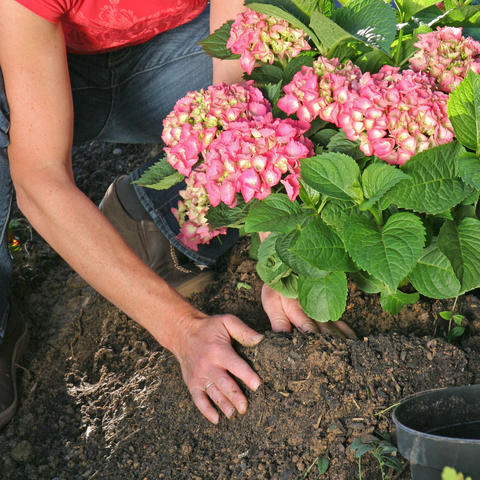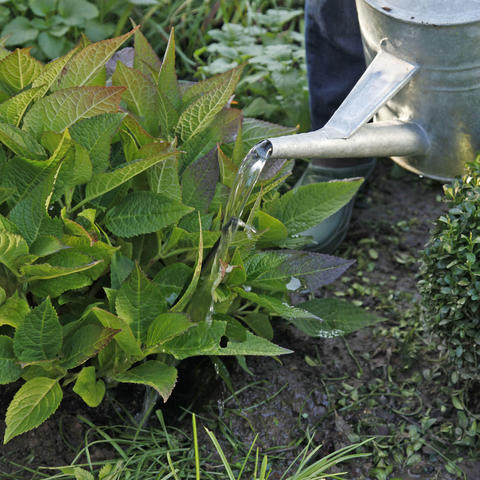The most important tips for planting Hydrangeas
Hydrangeas are popular plants that have specific requirements in terms of location and soil. Bear this in mind when planting them and you’ll be rewarded with beautiful blossoms for weeks.

Hydrangeas need to be planted in the right spot so that they bloom luxuriantly in summer
Hydrangeas have a similar root system to Rhododendrons: it is very shallow and there is a high proportion of fibrous fine roots. With roots that enjoy humus, they are perfectly adapted to living in forest soils rich in raw humus – it’s very important to take this into account when planting Hydrangeas in the garden.
The popular flowering shrubs need humus-rich, evenly moist soil, as well as a shady and humid spot that is protected from direct midday sun. While Hydrangeas are not as averse to light as is generally believed – the soil still needs to be sufficiently moist in strong summer sunshine to prevent the shrubs from flagging.
Hydrangeas are not quite as sensitive to lime as Rhododendrons. It’s fine for the soil to contain some lime, provided that it is very rich in humus. However, soils with high pH levels can cause Hydrangeas to suffer lime-induced chlorosis: the leaves turn yellow and show symptoms of an iron deficiency, as the Hydrangea’s roots are unable to absorb sufficient quantities of the nutrient due to the high lime levels.

Hydrangeas are usually available with root balls at garden centers and can therefore be planted well into the season. The only important thing is that the flowering shrubs are well-established by the first frosts. You should therefore plant your Hydrangeas by mid-August at the latest. However, it’s better to plant the shrubs in spring once the worst winter frosts have passed. This is usually the case from mid-March in this country.
As with rhododendrons, the most important thing is to thoroughly prepare the soil for the Hydrangeas. For loamy, compacted soils in particular, you should dig a large hole and then mix the excavated soil with leaf humus at a ratio of at least 1:1. If you don’t have any of this, you can also use bark humus. Garden compost, on the other hand, is not ideal for Hydrangeas, because it often has high levels of lime and salt. You should also incorporate some coarse sand to improve soil drainage. Leaf humus is usually sufficient for sandy soils. Alternatively, composted cow manure also works very well.

Water new Hydrangeas thoroughly after planting and mulch the soil with a layer of leaf or bark humus so that it does not lose too much moisture through evaporation. It’s important that it does not dry out over subsequent weeks, so that the Hydrangea can successfully establish its roots. You should therefore keep an eye on soil moisture if it hasn’t rained for a few days, and water the shrubs with rainwater or tap water with a low lime content when necessary.



